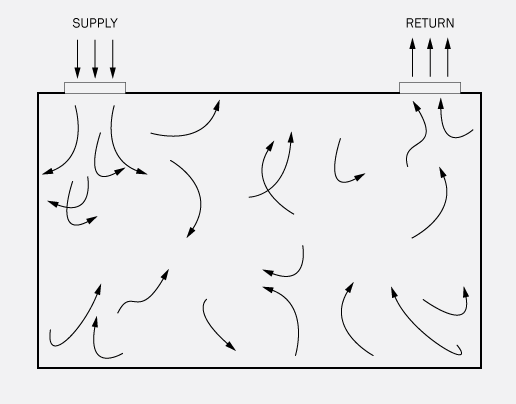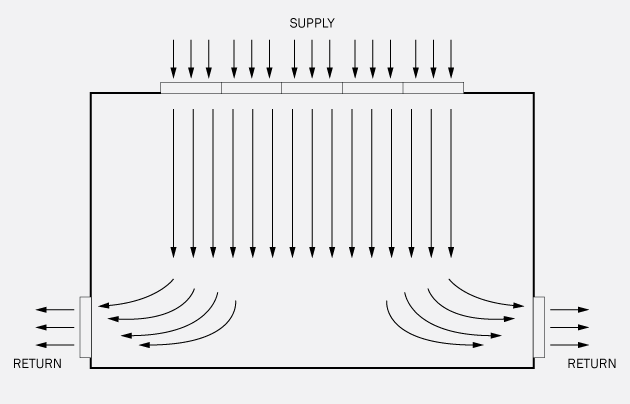Laminar flow is a phenomenon where air, gas, or a liquid flows in parallel layers and there is no mixing of layers. It is the opposite of turbulent flow, where the molecules are constantly mixing and moving in varied ways across a space. Relative to HVAC systems, laminar flow provides a way to maintain the clean nature of air within a space and also prevents mixing of air, which can cause contamination. Laminar flow HVAC systems are often used in surgery suites, laboratories, or other clean rooms.
Turbulent Flow
The diagram below shows a typical room with a supply diffuser and return grille, both of which are in the ceiling. In this case, the air moves in an unpredictable manner as dictated by pressure and temperature differences. Air molecules are constantly colliding and can create contamination of the air as particles are transported around the room before eventually leaving via the return grille.

Laminar Flow
In a laminar flow situation, as seen in the diagram below, the air move predictably and in parallel layers from the supply diffusers in the ceiling. Since the return grilles are located low, the air is forced down and toward the returns without having to move back through clean air to ceiling returns. This prevents contamination since any unwanted particles are transported in a straight line out of the room.

Laminar Flow Hoods and Other Applications
While the examples above assume that the space is a room and the air is supplied by ducts, the space can also be a desktop device used within a laboratory, which is called a Laminar Flow Hood or a Laminar Flow Cabinet. In that case, air passes through a HEPA filter and is then blown smoothly in a laminar flow over the objects in the hood. The hoods come in a variety of sizes and air flow configurations.
No matter the application, the goal is the same: to prevent contamination of the air by providing airflow in parallel layers that do not mix.


